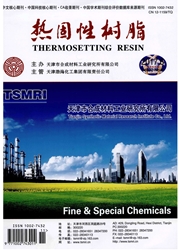

 中文摘要:
中文摘要:
白腐烂真菌, Phanerochaete chrysosporium (P。chrysosporium ) ,在腐殖的酸的荧光光谱学特征上在农业浪费 composting,和它的效果的不同阶段期间被接种(哈) 被学习。结果证明排放系列在 400 nm 和一个宽广肩膀有一座锋利的山峰,最大值在 460 nm 集中了。刺激系列在 470 nm 有二山峰和展览红移动(到更长的波长的移动) 。同步扫描系列介绍很多座山峰和肩膀,并且在更短的波长的山峰逐渐地消失并且形成一个肩膀。在 composting 的最后的阶段,荧光系列有类似的形状,但是荧光紧张减少。P。chrysosporium 增加 aromatization 的度和聚合哈当它在第二发酵期间被接种时,分阶段执行,当它不在 humification 度上生产一个明显的变化时哈当它在第一发酵期间被接种时,分阶段执行。与从土壤的 HA 的荧光光谱学特征相比,从堆肥的 HA 的结构更简单,这项活动更高。
 英文摘要:
英文摘要:
The white-rot fungus, Phanerochaete chrysosporium (P. chrysosporium), was inoculated during different phases of agricultural waste composting, and its effect on the fluorescence spectroscopy characteristics of humic acid (HA) was studied. The results show that the emission spectra have a sharp peak at 400 nm and a broad shoulder with the maximum centered at 460 nm. The excitation spectra have two peaks and exhibit red shift (shift to longer wavelengths) at 470 nm. The synchronous scan spectra present a number of peaks and shoulders, and the peaks at shorter wavelengths disappear gradually and form a shoulder. At the final stage of composting, the fluorescence spectra have similar shapes, but the fluorescence intensities decrease. P. chrysosporium increases the degree of aromatization and polymerization of HA when it is inoculated during the second fermentation phase, while it does not produce an obvious change on the humification degree of HA when it is inoculated during the first fermentation phase. Compared with the fluorescence spectroscopy characteristics of HA from soil, the structure of HA from compost is simpler and the activity is higher.
 同期刊论文项目
同期刊论文项目
 同项目期刊论文
同项目期刊论文
 Effect of ligninolytic enzymes on lignin degradation and carbon utilization during lignocellulosic w
Effect of ligninolytic enzymes on lignin degradation and carbon utilization during lignocellulosic w Oxalate production at different initial Pb2+ concentrations and the influence of oxalate during soli
Oxalate production at different initial Pb2+ concentrations and the influence of oxalate during soli Transfer of heavy metals from compost to red soil and groundwater under simulated rainfall condition
Transfer of heavy metals from compost to red soil and groundwater under simulated rainfall condition Mycelial growth and solid-state fermentation of lignocellulosic waste by white-rot fungus Phanerocha
Mycelial growth and solid-state fermentation of lignocellulosic waste by white-rot fungus Phanerocha Changes of microbial population structure related to lignin degradation during lignocellulosic waste
Changes of microbial population structure related to lignin degradation during lignocellulosic waste Influence of Phanerochaete chrysosporium on microbial communities and lignocellulose degradation dur
Influence of Phanerochaete chrysosporium on microbial communities and lignocellulose degradation dur Degradation of lead-contaminated lignocellulosic waste by Phanerochaete chrysosporium and the reduct
Degradation of lead-contaminated lignocellulosic waste by Phanerochaete chrysosporium and the reduct Spatial analyzing system for urban land-use management based on GIS and multi-criteria assessment mo
Spatial analyzing system for urban land-use management based on GIS and multi-criteria assessment mo Rapid detection of picloram in agricultural field samples using a disposable immunomembrane-based el
Rapid detection of picloram in agricultural field samples using a disposable immunomembrane-based el Effect of biodelignification of rice straw on humification and humus quality by Phanerochaete chryso
Effect of biodelignification of rice straw on humification and humus quality by Phanerochaete chryso An electrochemical sensor for detection of laccase activities from Penicillium simplicissimum in com
An electrochemical sensor for detection of laccase activities from Penicillium simplicissimum in com Catechol determination in compost bioremediation using a laccase sensor and artificial neural networ
Catechol determination in compost bioremediation using a laccase sensor and artificial neural networ Removal and Recovery of Zn(2+) and Pb(2+) by Imine-Functionalized Magnetic Nanoparticles with Tunabl
Removal and Recovery of Zn(2+) and Pb(2+) by Imine-Functionalized Magnetic Nanoparticles with Tunabl Cr(VI) reduction by Pseudomonas aeruginosa immobilized in a polyvinyl alcohol/sodium alginate matrix
Cr(VI) reduction by Pseudomonas aeruginosa immobilized in a polyvinyl alcohol/sodium alginate matrix Preparation and application of stability enhanced magnetic nanoparticles for rapid removal of Cr(VI)
Preparation and application of stability enhanced magnetic nanoparticles for rapid removal of Cr(VI) Laccase biosensor using magnetic multiwalled carbon nanotubes and chitosan/silica hybrid membrane mo
Laccase biosensor using magnetic multiwalled carbon nanotubes and chitosan/silica hybrid membrane mo Understanding Lignin-Degrading Reactions of Ligninolytic Enzymes: Binding Affinity and Interactional
Understanding Lignin-Degrading Reactions of Ligninolytic Enzymes: Binding Affinity and Interactional Artificial Neural Network Approach for Predicting Cation Exchange Capacity in Soil Based on Physico-
Artificial Neural Network Approach for Predicting Cation Exchange Capacity in Soil Based on Physico- Trace detection of picloram using an electrochemical immunosensor based on three-dimensional gold na
Trace detection of picloram using an electrochemical immunosensor based on three-dimensional gold na Highly sensitive sensor for detection of NADH based on catalytic growth of Au nanoparticles on glass
Highly sensitive sensor for detection of NADH based on catalytic growth of Au nanoparticles on glass Novel Neural Network-Based Prediction Model for Quantifying Hydroquinone in Compost with Biosensor M
Novel Neural Network-Based Prediction Model for Quantifying Hydroquinone in Compost with Biosensor M Effect of inoculating white-rot fungus during different phases on the compost maturity of agricultur
Effect of inoculating white-rot fungus during different phases on the compost maturity of agricultur Fluorescence spectroscopy characteristics of humic acid by inoculating white-rot fungus during diffe
Fluorescence spectroscopy characteristics of humic acid by inoculating white-rot fungus during diffe 期刊信息
期刊信息
